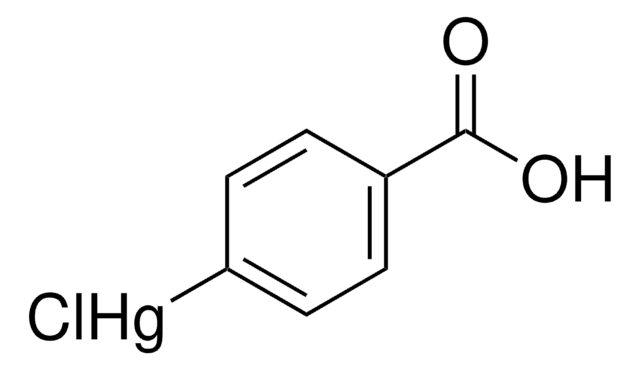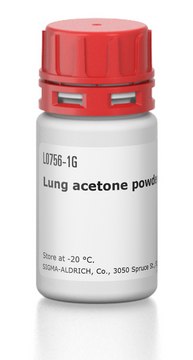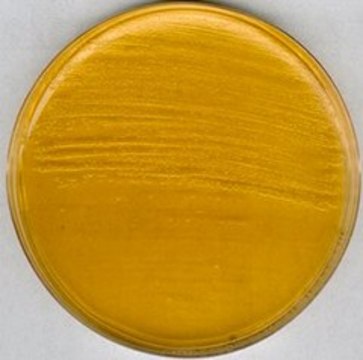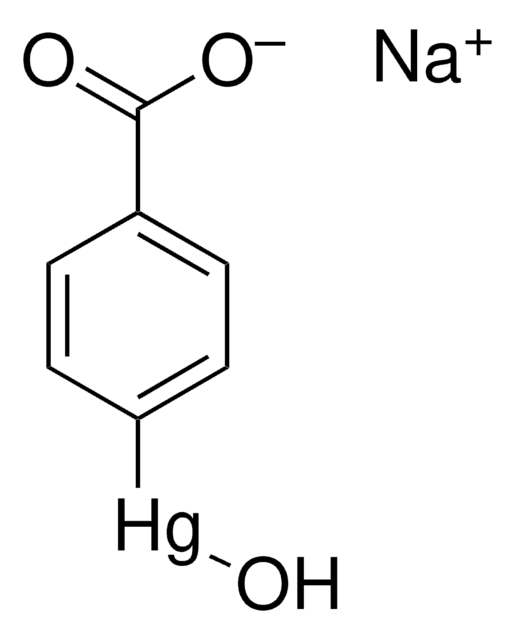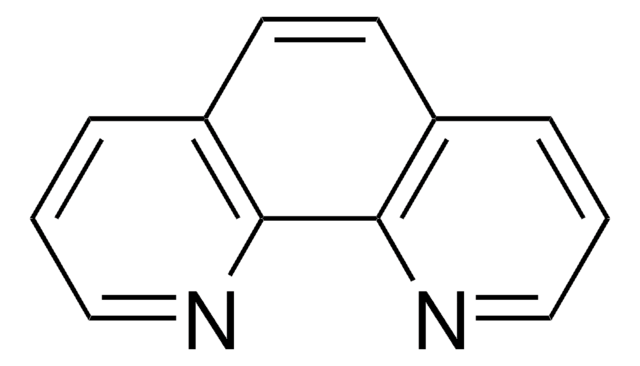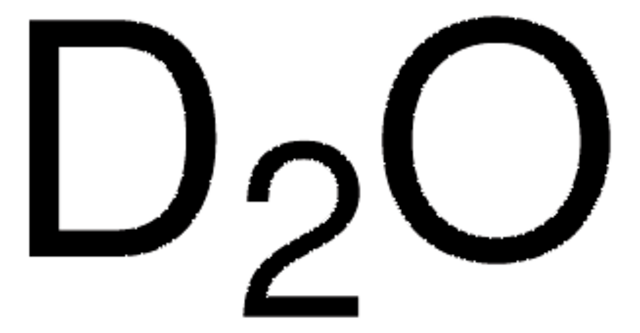C5913
4-Chloromercuribenzoic acid
cysteine active site modifier
Recommended Products
description
cysteine active site modifier
Assay
≥98.5% (HPLC)
form
powder
mp
287 °C (dec.) (lit.)
solubility
1 M NaOH: 20 mg/mL, clear, colorless
SMILES string
OC(=O)c1ccc([Hg]Cl)cc1
InChI
1S/C7H5O2.ClH.Hg/c8-7(9)6-4-2-1-3-5-6;;/h2-5H,(H,8,9);1H;/q;;+1/p-1
InChI key
YFZOUMNUDGGHIW-UHFFFAOYSA-M
Looking for similar products? Visit Product Comparison Guide
Application
Signal Word
Danger
Hazard Statements
Precautionary Statements
Hazard Classifications
Acute Tox. 1 Dermal - Acute Tox. 2 Inhalation - Acute Tox. 2 Oral - Aquatic Acute 1 - Aquatic Chronic 1 - STOT RE 2
WGK
WGK 3
Flash Point(F)
Not applicable
Flash Point(C)
Not applicable
Regulatory Information
Certificates of Analysis (COA)
Search for Certificates of Analysis (COA) by entering the products Lot/Batch Number. Lot and Batch Numbers can be found on a product’s label following the words ‘Lot’ or ‘Batch’.
Already Own This Product?
Find documentation for the products that you have recently purchased in the Document Library.
Articles
Biofiles reviews innovative technologies for cancer research, reflecting the complexity of the disease.
Cancer research innovations address the complexity of the disease, providing advanced technologies for varied applications.
Our team of scientists has experience in all areas of research including Life Science, Material Science, Chemical Synthesis, Chromatography, Analytical and many others.
Contact Technical Service